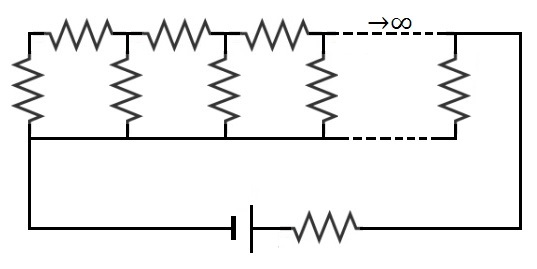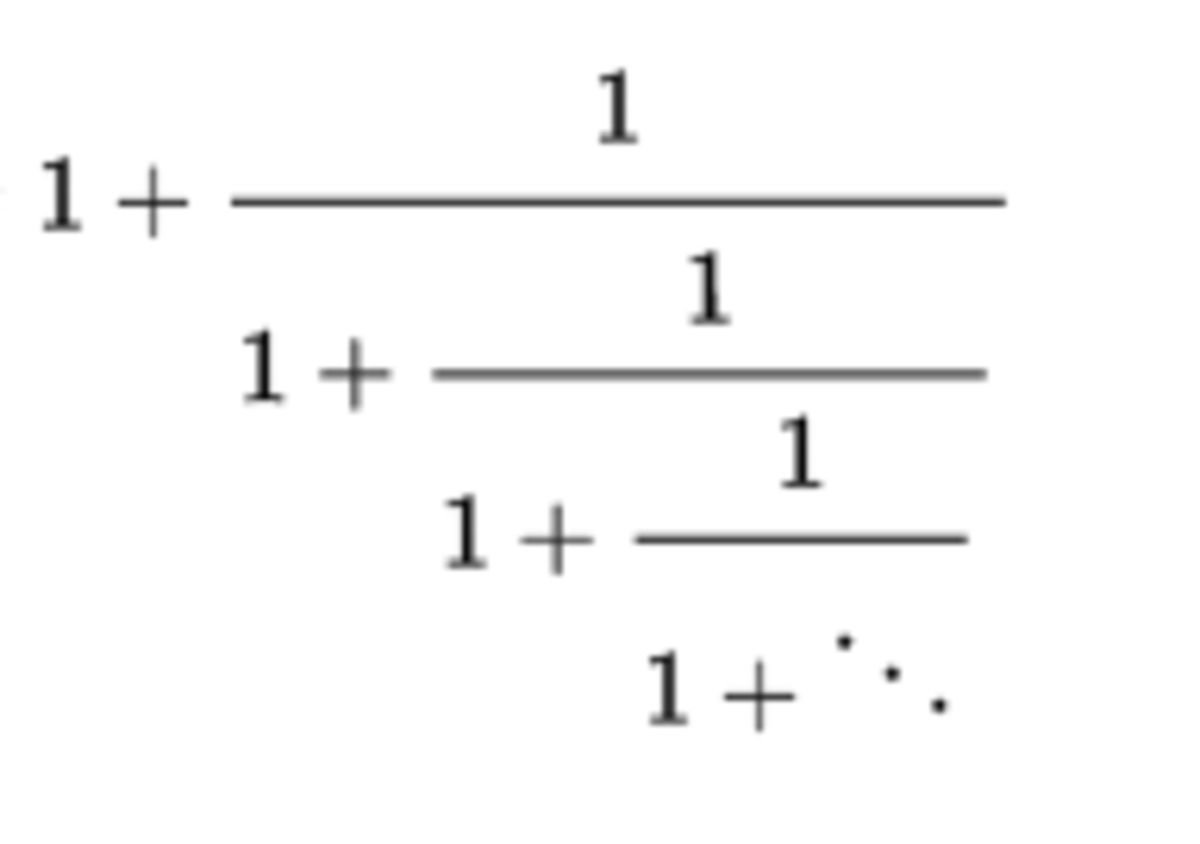A familiar sequence

In the above circuit, each resistor has a resistance of 1 and the wires have no resistance.
As the number of resistors approaches infinity, the equivalent resistance approaches where , , and are positive integers, and is square free. What is ?
The answer is 8.
This section requires Javascript.
You are seeing this because something didn't load right. We suggest you, (a) try
refreshing the page, (b) enabling javascript if it is disabled on your browser and,
finally, (c)
loading the
non-javascript version of this page
. We're sorry about the hassle.

Let the equivalent resistance of the infinite lattice resistor network be R , then we note that:
R ⟹ R 2 + R − 1 ⟹ R = 1 ∣ ∣ ( 1 + R ) = 2 + R 1 + R = 0 = 2 5 − 1
Therefore, the equivalent resistance of the whole circuit is: R e q = 1 + R = 1 + 2 5 − 1 = 2 1 + 5 .
⟹ a + b + c = 1 + 5 + 2 = 8